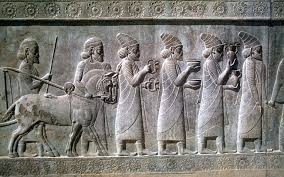The Colossus of Rhodes stands as one of the most remarkable achievements of the ancient world, symbolizing both human ingenuity and the pride of a city-state. As one of the Seven Wonders of the Ancient World, this massive statue reflects the ambitions and cultural significance of ancient Greece.
Construction of the Colossus
Built around 280 BCE, the Colossus of Rhodes was designed to honor the sun god Helios, reflecting the island city’s devotion and gratitude for their victory over invading forces. The statue was crafted by the sculptor Chares of Lindos, using bronze plates over an iron framework. The construction required immense skill and coordination, as it stood approximately 33 meters tall, making it one of the tallest statues of the ancient world. Its creation not only showcased advanced engineering techniques but also highlighted the artistic prowess of the Greeks.
Purpose and Significance
The primary purpose of the Colossus was both symbolic and celebratory. It commemorated Rhodes’ successful defense against a siege and served as a powerful emblem of freedom and resilience. Beyond its commemorative function, the statue acted as a cultural landmark, drawing visitors and traders to the island while reinforcing the city’s status and identity within the Greek world. Its imposing presence at the harbor also symbolized the importance of Rhodes as a center of commerce and naval power.
Destruction and Legacy
Despite its grandeur, the Colossus of Rhodes stood for only about 54 years. In 226 BCE, a devastating earthquake struck the island, causing the statue to collapse. Although the remains were eventually sold off, the Colossus left a lasting impact on history and imagination. Ancient writers and later civilizations continued to marvel at its size and craftsmanship, inspiring countless artists and engineers for centuries. Today, it remains a testament to human ambition and the enduring cultural legacy of ancient Greece.
Conclusion
The Colossus of Rhodes exemplifies the creativity, engineering skill, and cultural pride of the ancient Greeks. From its construction to its symbolic purpose and eventual destruction, the statue tells a story of resilience, artistry, and ambition. Even in ruins, it continues to captivate historians and enthusiasts alike, reminding us of the remarkable achievements of the ancient world.







